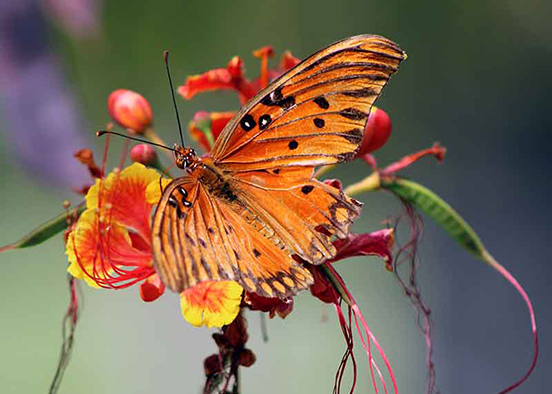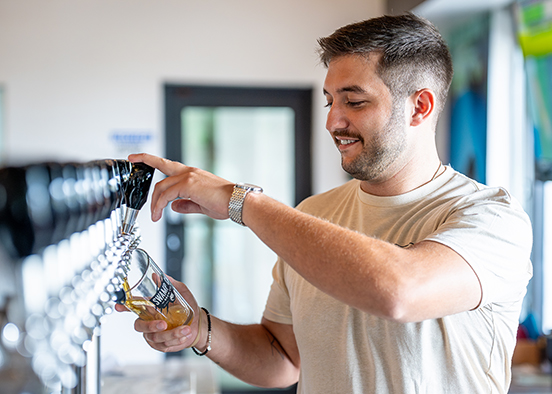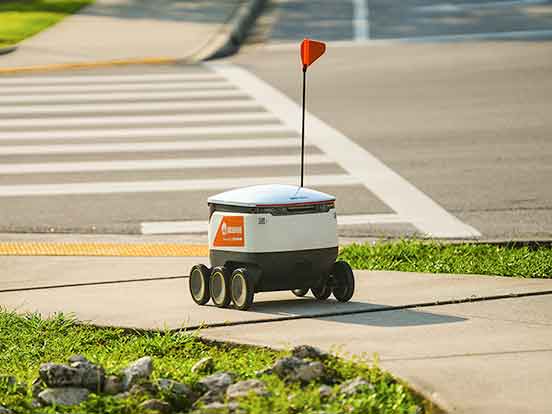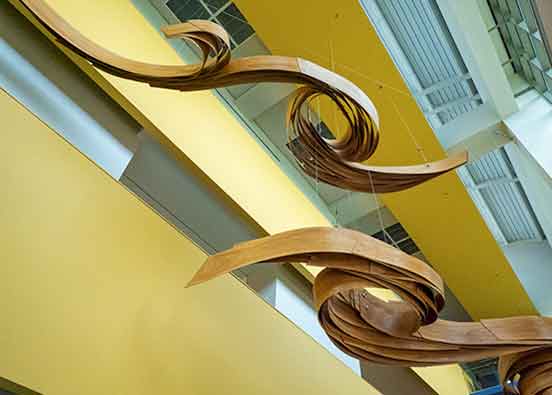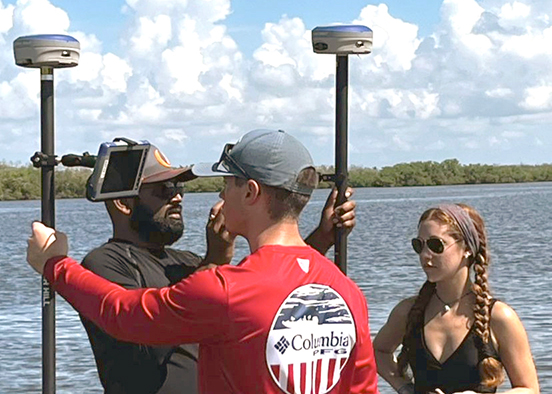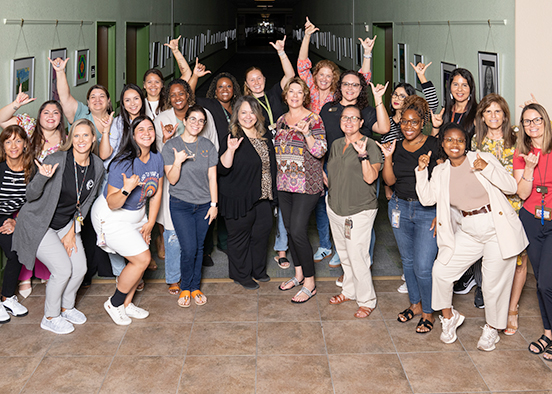5 tiny creatures with a big campus presence
Insects and other arthropods are the unsung engineers of the world around us. They pollinate plants, decompose organic matter, aerate soil, control pests and serve as food for birds and reptiles. Without them, natural systems we rely on would collapse. At Florida Gulf Coast University, the lands that surround buildings and trails are home to a stunning array of arthropods, each playing a crucial role in sustaining healthy ecosystems.
Here’s a sampling of the many insects and arthropods — some might call them creepy-crawlies — that keep FGCU’s ecosystem humming and inspire a sense of awe at the wonder of nature (or make some folks squirm).
Eastern lubber grasshopper (Romalea microptera)
Large and slow-moving, the Eastern lubber is hard to miss at FGCU, with its bold yellow, red and black coloring. Although considered a destructive pest by gardeners, it contributes to the natural ecosystem by aiding nutrient cycling and serving as prey for birds and other wildlife, maintaining balance in food webs across campus. These grasshoppers can be found in grassy areas on campus.
“I find them most often in the lilies behind Edwards Hall,” says Joyce Fassbender, an instructor and entomologist in the Department of Biological Sciences. She helps undergraduate students do hands-on research with insects — studying how many different species live in an area, how bees and butterflies interact with flowers, and how certain insects that feed on dead animals get the nutrients they need.
Nearly solid black as juveniles, Eastern lubber grasshoppers have a bright orange or yellow stripe down their backs. There are two adult color forms in Florida: Northern is mostly black with some red and orange coloring, while Southern is red and yellow with some black.
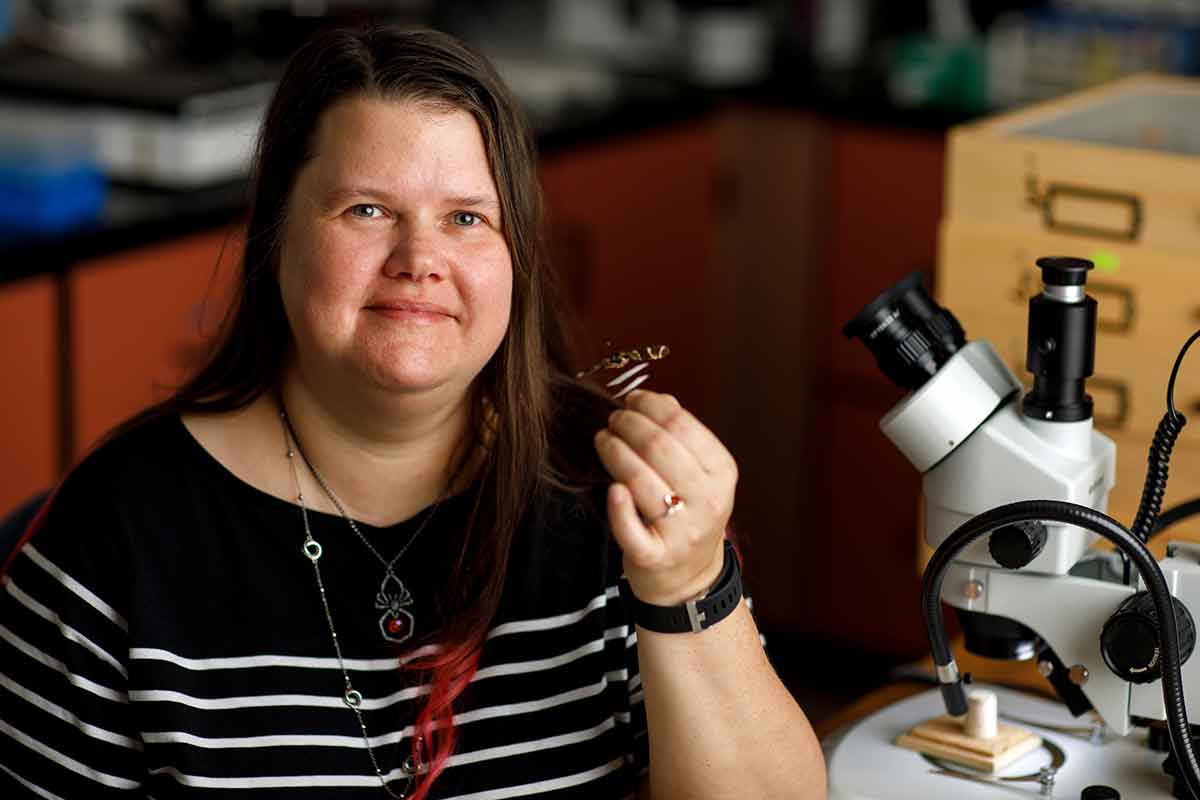
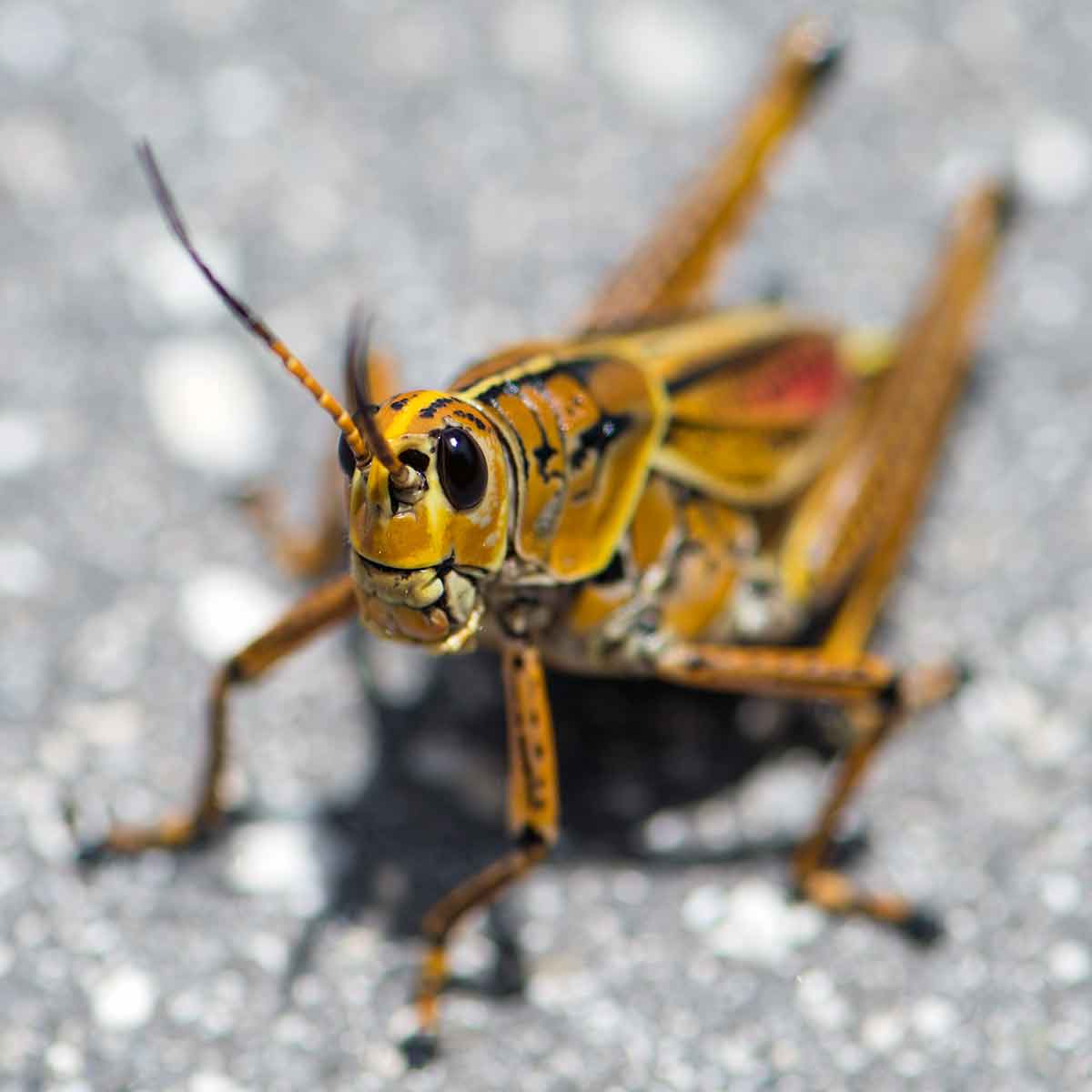
“The bright color warns predators that they’re poisonous,” Fassbender says. “However, the loggerhead shrike [bird] has learned to avoid the poisons by impaling the grasshoppers on a branch and letting them roast in the sun for a few days, which degrades the poison and makes them edible.”
Best time to see: May be present year-round in southern Florida but most common in late spring through early fall (May-September)
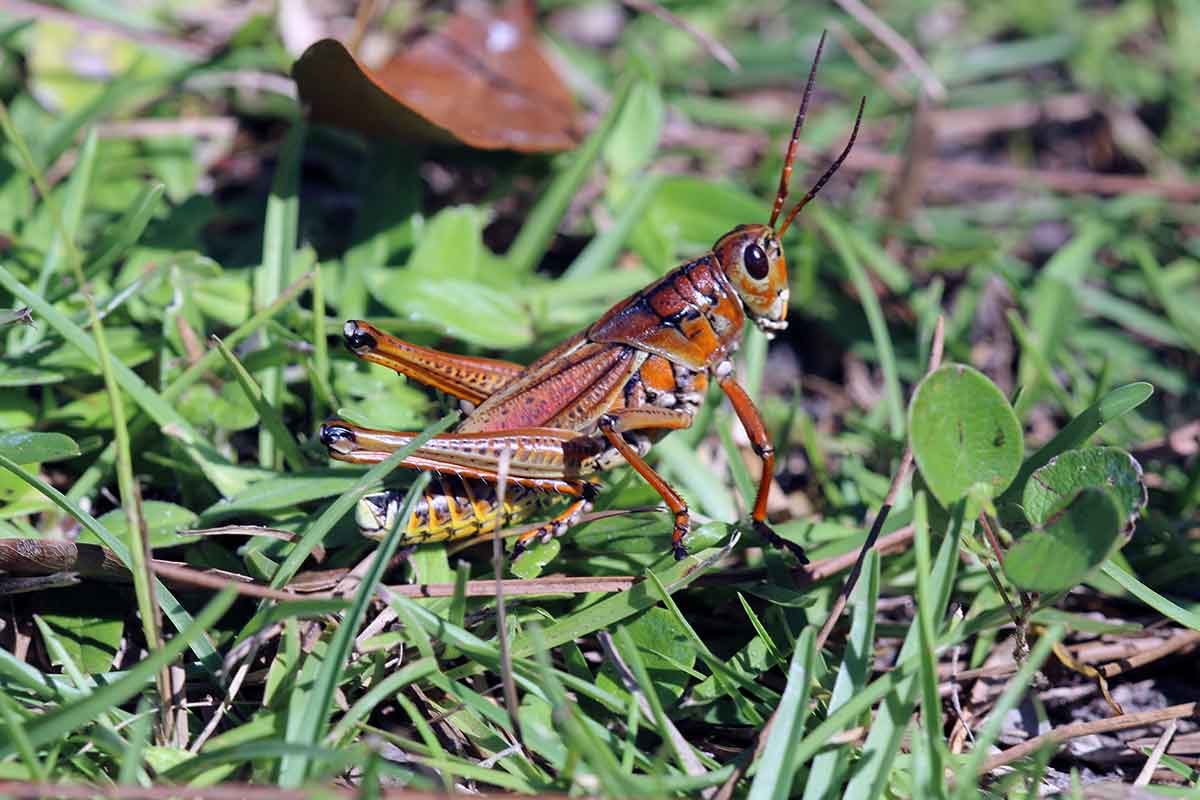
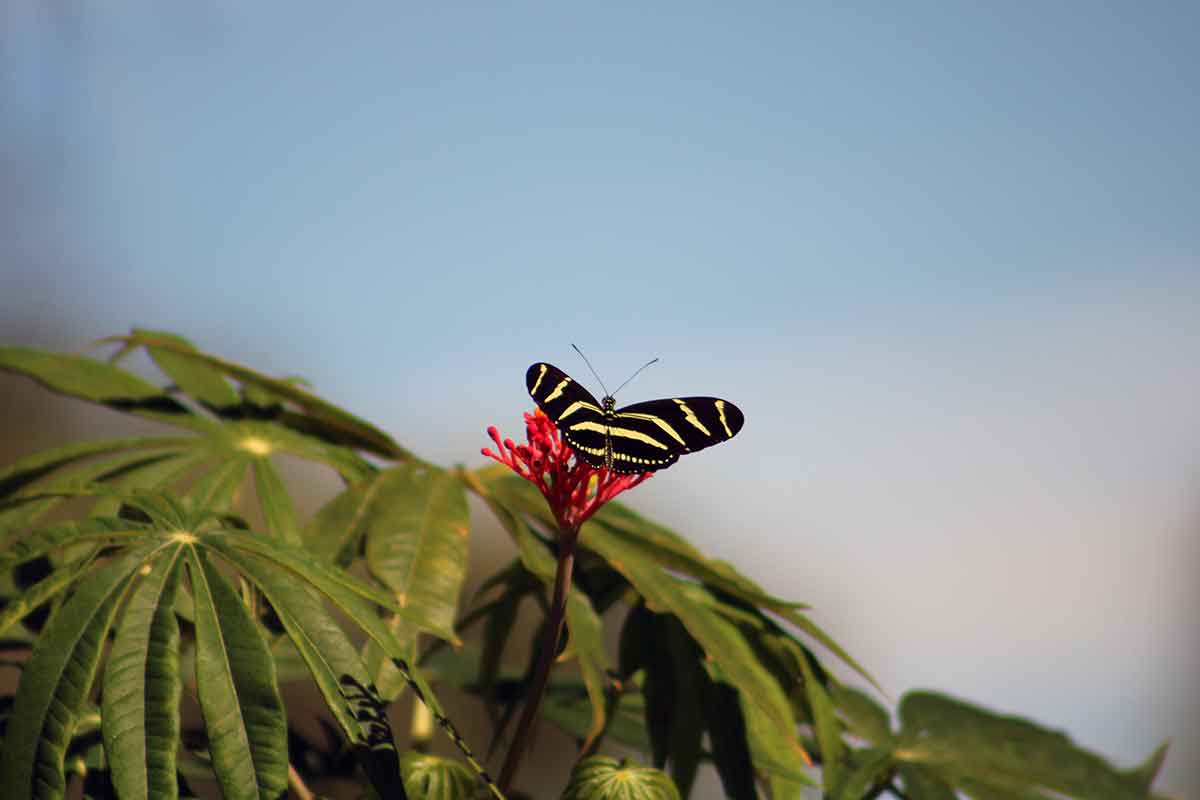
Zebra longwing (Heliconius charithonia)
Florida’s official state butterfly, the zebra longwing is attracted to the nectar of flowering plants on campus, including firebush, tropical sage and passionflower. Pollinators of native and ornamental flowers, they are commonly seen in the FGCU Food Forest and along the nature trails.
Easily recognized by its black wings streaked with creamy yellow stripes, the zebra longwing is known for its slow, graceful flight, communal roosting and long adult lifespan. Fassbender says the butterflies are unusually long-lived, surviving up to three months in the wild, compared to about two to four weeks for most butterflies.
Best time to see: Year-round, most active from spring through fall (March-October)
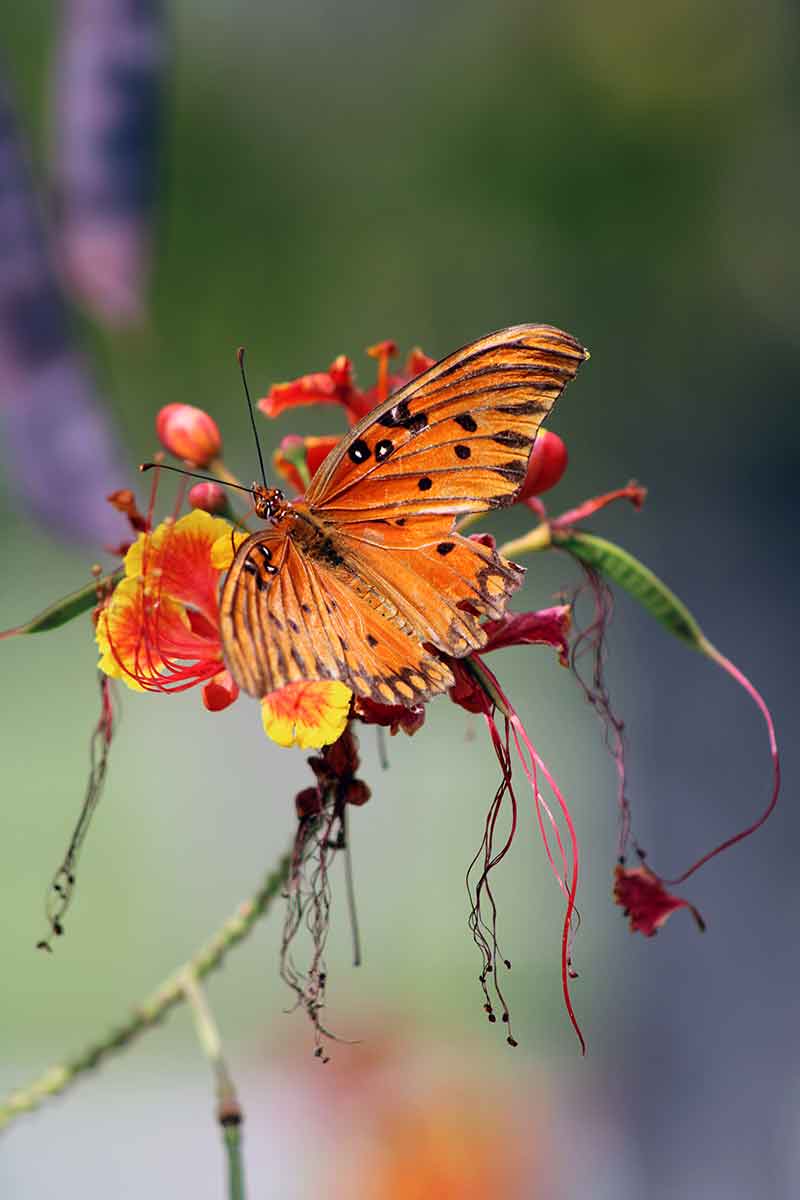
Gulf fritillary (Dione vanillae)
Fassbender says Gulf fritillaries are often mistaken for monarch butterflies. Like monarchs, they migrate — just not as far, staying local to Florida and the central U.S. This butterfly thrives on passionflower vines, which also serve as host plants for its caterpillars.
It plays a vital role in pollination and serves as a charismatic species for environmental education. With vivid orange wings patterned in black and shiny silver patches, the Gulf fritillary brings a splash of color to the environment. It can be found in the Food Forest, along the nature trails and near flowering plants around campus.
Best time to see: Year-round, peaking in late June to early fall (August-October)
Eastern amberwing (Perithemis tenera)
With wings that glow like stained glass in the sun, the Eastern amberwing is one of the smallest dragonflies in the United States — less than an inch long.
To see them on campus, Fassbender suggests scouting out campus ponds. The dragonflies are often seen perched atop long blades of grass or on sticks where they wait for prey or mates, or on flowering bushes away from water, also waiting for prey, she says. They feed on tiny flying insects, contributing to pest control and supporting a balanced ecosystem.
The males have clear amber wings to attract mates, while females have dark orange blotches on their wings. “A male will perform a courtship ritual where he takes the female to the possible egg-laying sites in his territory to show her what he has to offer,” Fassbender says.
Best time to see: Late spring through early fall (May-September)
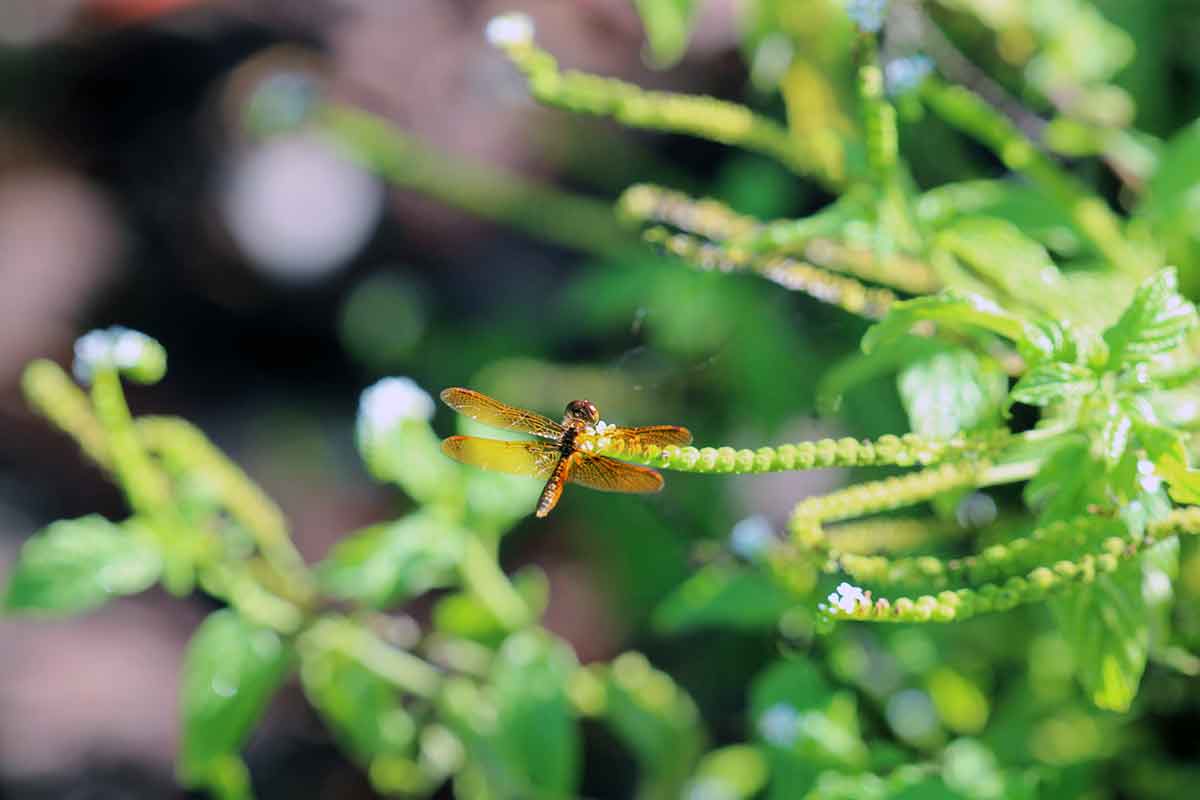
Brown-winged sweat bee (Agapostemon splendens)
This dazzling metallic green bee with subtle, brown-tinged wings is a jewel among pollinators. Native to Florida and found throughout the eastern U.S. and into Canada, these bees support biodiversity and plant reproduction, essential for maintaining vibrant landscapes and native plants.
To see this bee on campus, Fassbender suggests checking out open areas with plenty of flowers. “They may be feeding on wildflowers and flowering bushes or trees, and they can be seen in the FGCU Food Forest — wherever there are firebushes and along sunny trails on campus,” she says.
Females are solid green, while males are green with yellow- and black-stripped abdomens. They can sting — but are unlikely to because they are the sole caregivers for their young.
Best time to see: Spring through fall (March-October)
Explore the wild side of FGCU’s campus
To catch the widest range of these insects in their full life cycles — including eggs, larvae, pupae and adults — late spring through early fall (May-October) is ideal. Butterfly and bee activity peaks March-August, and grasshoppers and dragonflies are easiest to observe June-September.
To engage with the insects and other arthropods on FGCU’s distinctive campus, look closely at wildflowers, native shrubs and pond banks to see butterflies, bees and more — each going about their essential work. FGCU’s Food Forest, nature trails with tours by the campus naturalists and landscaped grounds offer plenty of opportunities to witness pollination in action, learn about habitat preservation and even contribute to citizen science initiatives.
Fassbender estimates there are at least 98 billion total arthropods, including 3.6 billion insects, on FGCU’s 800 acres, half of which is preserved or restored nature.
“One of my favorite factoids to share with students is that you’re never more than 5 feet from an insect at any given time, even when indoors,” she says.
This article is one in a series highlighting FGCU’s distinctive campus.
Latest FGCU News
- From electronics to ales, alum keeps business ventures brewing
- Robot faces, fresh spaces and bold ideas launch FGCU’s fall semester
- From stealing bases to studying forensics, softball star sets the pace
- 10 public artworks that capture culture on campus
- FGCU students harness technology to study hurricane impacts, coastal habitats
- FGCU grads stepping up amid school counselor shortages



